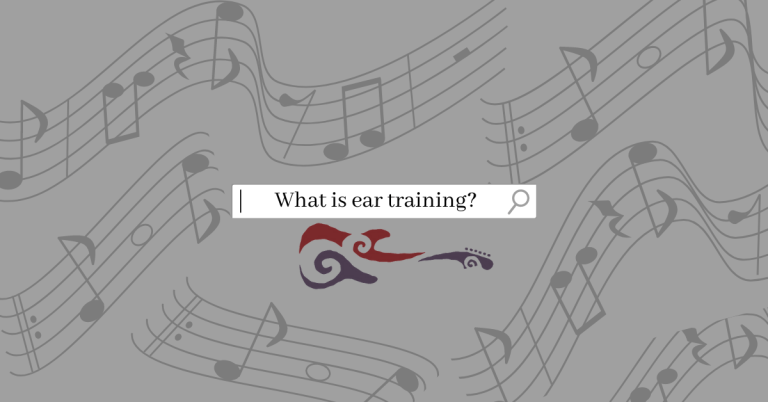Learn the CAGED System, Become a Better Rhythm Guitar Player
As a guitar instructor and professional guitarist in Nashville, I can attest to the transformative power of learning the CAGED system. Especially for rhythm guitarists who want to improve their skills and their opportunities to work more consistently.
When guitarists and songwriters begin to make fundamental connections to keys, chord progressions, and the function of applying chords they already know, across the neck, all kinds of light bulbs begin to go off.
In this blog post, we’ll explore why the CAGED System is indispensable for rhythm guitarists, shedding light on its importance in enhancing chord knowledge, fostering creativity, and elevating overall musicality.
What is the CAGED System?
The CAGED System is an approach to understanding the guitar fretboard, breaking it down into five fundamental shapes: C, A, G, E, and D. Each shape corresponds to a major chord, forming an interconnected framework that guitarists can use to visualize and navigate the neck.
The CAGED System is not just a series of shapes; it’s a powerful tool that grants guitarists unparalleled insights into chord structures, voicings, and the relationships between them.
Significantly, the CAGED System serves as a universal language for guitarists, providing a common ground for communication and exploration. By internalizing these shapes, players gain the ability to play chords, scales, and arpeggios more fluidly, fostering a deeper understanding of music theory.
This foundational knowledge is the key to unlocking creative potential and becoming a more proficient and versatile rhythm guitarist.
Advantages for Rhythm Guitarists
Rhythm guitarists stand to gain substantial benefits from embracing the CAGED System. Firstly, it offers enhanced chord knowledge by providing a systematic approach to understanding the fretboard. This means not just memorizing chords but truly grasping how they interconnect and overlap, enriching the guitarist’s vocabulary.
Furthermore, the CAGED System serves as a catalyst for creativity in rhythm playing. Armed with the knowledge of chord connections and voicings, guitarists can experiment with inversions, substitutions, and embellishments, injecting their playing with newfound dynamism and originality.
Moreover, the CAGED System significantly contributes to improving musicality and transitions. Smooth chord changes, a hallmark of a skilled rhythm guitarist, become second nature as players navigate the interconnected shapes seamlessly. This not only polishes the overall sound but also fosters cohesion within a musical ensemble.
Mastering the CAGED System empowers rhythm guitarists to elevate their playing, introducing depth and versatility into their musical repertoire.
How Can the CAGED System Help Your Rhythm Playing?
The CAGED System can significantly elevate your rhythm playing in three key ways:
- Improving Your Chord Knowledge and Understanding: The CAGED System provides a structured approach to comprehending the fretboard. By unraveling the interconnected chord shapes, you gain a deep understanding of how chords harmonize across the neck, enhancing your overall chord knowledge.
- Boosting Your Rhythm Playing Creativity: Explore the creative potential of the CAGED System by experimenting with inversions, substitutions, and embellishments. This systematic approach allows you to infuse your rhythm playing with dynamic elements, fostering creativity and originality.
- Enhancing Musicality and Mastering Smooth Chord Transitions: Seamlessly navigating through interconnected shapes not only contributes to a polished and professional sound but also improves the overall musicality of your rhythm playing.
1. Improve Your Chord Knowledge and Understanding
The CAGED System is incredibly useful for rhythm guitarists, giving you an unmatched grasp of chords across the fretboard. Break the guitar neck into five CAGED shapes (C, A, G, E, and D), and suddenly, you see chords from a whole new perspective.
This straightforward method lets you explore chord structures and voicings in a holistic way. You’ll easily tackle various chord progressions, making you flexible for any music style.
For guitar instructors, teaching CAGED is a must. It’s like a secret weapon for students hungry to amp up their chord know-how, tackle chord inversions, and get friendly with the guitar neck. Plus, it’s a gateway to basic music theory.
And here’s the kicker: CAGED opens the door to the Nashville Number System. It’s like a GPS for the fretboard, guiding you to play chords in different spots effortlessly. Master this, and you’ll be an accompaniment wizard, making songs sound smooth and easy.
2. Boosting Your Rhythm Playing Creativity
The CAGED System is your go-to for cranking up the creativity in your rhythm guitar game. As a guide, I’ve seen students armed with CAGED break creative barriers and try out new rhythmic tricks.
Dive into the chords across the fretboard, and you’ll unlock a world of possibilities. Mess around with inversions, substitutions, and extensions – suddenly, your playing is full of dynamic surprises. Break free from the usual open chords or barre chords. Now your playing has layers, adding cool textures and counterpoints.
Think about teaming up with another guitarist in a band – CAGED is like a secret language that helps you both click. It ensures your guitar parts complement each other, creating a mix of different sounds.
Imagine working with a singer-songwriter. CAGED becomes your toolkit to turn their ideas into awesome chord progressions. You can shift to different keys or try out new chord combos, making you a versatile collaborator who boosts the whole performance.
In a singer-songwriter setup, CAGED helps you craft arrangements that fit with the vocals. Use your chord knowledge to make transitions that match the storytelling, adding an emotional punch to the performance.
Whether you’re on stage, in the studio, or jamming with a band, CAGED turns you into the master of crafting guitar parts. Play around with different ideas, add layers, and bring depth to the sound. As a rhythm guitarist, your knack for making songs richer and more interesting ensures you’re always in demand.
3. Enhancing Musicality and Mastering Smooth Chord Transitions
Smooth transitions between chords are a hallmark of a skilled rhythm guitarist. The CAGED System plays a pivotal role in honing this skill by providing a systematic approach to chord transitions.
Understanding how chords connect within the CAGED framework enables guitarists to navigate chord changes seamlessly, contributing to a polished and professional sound across the neck. It also provides an important structure for scales and arpeggios that come later.
The CAGED System provides a systematic approach to chord transitions, ensuring that both guitarists in a band seamlessly navigate changes. This not only contributes to a polished and professional sound but also fosters a sense of cohesion within the ensemble.
The Coda
In conclusion, the CAGED System is a must-have for rhythm guitarists. It gives a solid grip on chords, fuels creativity, and sharpens musical skills. As your guitar guide, I strongly recommend weaving the CAGED System into your practice routine.
The perks go beyond the fretboard, shaping musicians who excel in rhythm and express their musical flair. If you’re new to CAGED, try our beginner-friendly course breaking down each chord shape.
For online or in-person lessons, feel free to book a session with Green Hills Guitar Studio. Your journey to becoming a more versatile rhythm guitarist starts by unlocking the power of the CAGED System.






